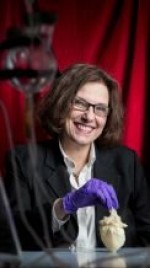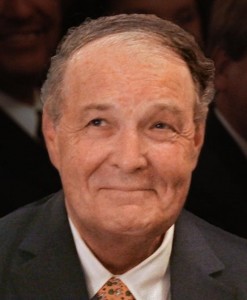You are here
Stem Cells for Cardiac Patients
Heart and vascular disease (or cardiovascular disease, CVD) are the leading causes of death and disability in the world, despite a large proportion of it being preventable.
In the US alone, 82.6 million Americans have some form of CVD. Someone dies from CVD every 33 seconds. More than 40,000 children are born each year with a congenital heart defect.
One of the most promising new avenues for CVD treatment is the use of adult stem cells, to help heal and regenerate damaged hearts.
How can stem cells help the heart?
Stem cells are actually part of our natural circulating rescue system. They travel out of the bone marrow and patrol the circulation system looking for areas of injury to repair. We also have resident stem cells in every organ of the body.
Our first-in-the-world stem cell research at the the Stem Cell Center of the Texas Heart Institute, and subsequent clinical trials in humans, have shown that a patient's own stem cells, harvested from their bone marrow, can help generate new heart muscle tissues and blood vessels in hearts damaged by heart attacks or severe heart failure.
Advances in Stem Cells
After years of study, we have found that when people reach their early 60s, and they begin to have health issues with their bodies, their stem cells also lose their restorative powers. Subsequent research has shown, however, that certain specific cells can be taken from the body fat or bone marrow of healthy young individuals and may be used therapeutically in older patients without adverse immunological reaction. Clinical trials are ongoing and we are constantly learning more about this.
As a result of this work, the National Heart Lung and Blood Institute has established a nationwide consortium of leading medical and research institutions, the Cardiovascular Cell Therapy Research Network (CCTRN), to carry cardiac cell therapy research forward. We are very optimistic about the future of this type of stem cell therapy.
Building New Organs and Reversing Disease
 Another area of great promise is the emerging field of regenerative medicine. Dr. Doris Taylor recently joined the Texas Heart Institute as Director of Regenerative Medicine Research. Through her pioneering work, we now have the capability to deplete animal and human hearts of all of their cellular structure and regenerate the "decellularized" scaffolds into healthy organs by the infusion of stem cells. These methods also work on other organs in the body. Many believe that these "bioartificial" organs are the early steps toward our ability to grow new organs for people using their own adult stem cells. We are optimistic that the technology will allow us to begin safe clinical trials in humans within only a few years.
Another area of great promise is the emerging field of regenerative medicine. Dr. Doris Taylor recently joined the Texas Heart Institute as Director of Regenerative Medicine Research. Through her pioneering work, we now have the capability to deplete animal and human hearts of all of their cellular structure and regenerate the "decellularized" scaffolds into healthy organs by the infusion of stem cells. These methods also work on other organs in the body. Many believe that these "bioartificial" organs are the early steps toward our ability to grow new organs for people using their own adult stem cells. We are optimistic that the technology will allow us to begin safe clinical trials in humans within only a few years.
In sum, many advances in stem cells, genetics, and regenerative medicine hold great promise and these fields are advancing rapidly. The next decade or more will undoubtedly be a golden age for progress. We are determined to push the field forward until heart and vascular disease are a thing of the past and our children have a more heart-healthy future ahead of them.



